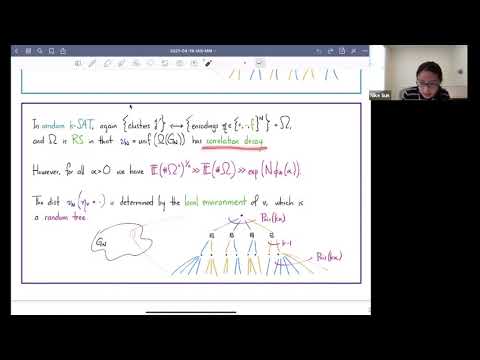Abstract
(This lecture will be self-contained.) In high dimensions, what does it look like when we take the intersection of a set of random half-spaces with either the sphere or the Hamming cube? This is one phrasing of the so-called perceptron problem, whose study originated with a toy model of a very simple neural network. A non-rigorous solution was given in the 1980s (Gardner, Derrida, Krauth, Mézard) using methods of statistical physics. Shcherbina and Tirozzi gave a rigorous solution to the positive spherical perceptron, making crucial use of the convexity of this problem. The other cases of the model are non-convex and remain open problems. I will survey the physics solution and describe some results for the perceptron on the Hamming cube.
This lecture is based on joint work with Jian Ding.
